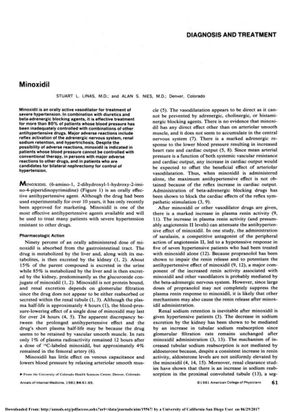TLDR Minoxidil controls blood pressure effectively, but may cause side effects like hypertrichosis.
This 1981 document discusses the use of minoxidil as an effective antihypertensive agent for patients whose blood pressure cannot be controlled with other medications. It can control blood pressure in most patients within 48 to 72 hours, but there are several adverse reactions that may limit its use, including reflex activation of the adrenergic nervous system, sodium retention, and hypertrichosis. The recommended starting dose is 2.5 mg per day, which can be increased up to a maximum of 40 mg per day if necessary. Hypertrichosis can be a side effect of minoxidil and can be treated with depilatory agents.
2 citations
,
September 2022 in “American Journal of Clinical Dermatology” August 2022 in “International Journal of Dermatology” Low-dose oral and sublingual minoxidil seem safe for children with hair disorders.
2 citations
,
January 2022 in “Skin appendage disorders” Low-dose oral minoxidil effectively promotes hair growth but has associated risks.
1 citations
,
August 2021 in “Cosmoderma” Low-dose oral minoxidil is effective and well-tolerated for treating hair loss.
 39 citations
,
February 2021 in “Journal of The American Academy of Dermatology”
39 citations
,
February 2021 in “Journal of The American Academy of Dermatology” Low-dose oral minoxidil safely treats hair loss, with hypertrichosis as main side effect.
 24 citations
,
September 2020 in “Dermatology and therapy”
24 citations
,
September 2020 in “Dermatology and therapy” Oral minoxidil 5 mg daily increases hair growth safely in men with hair loss, with minor side effects.
 117 citations
,
August 2019 in “Drug Design Development and Therapy”
117 citations
,
August 2019 in “Drug Design Development and Therapy” Minoxidil effectively treats hair loss, but use cautiously and monitor side effects.
 45 citations
,
November 1979 in “British Journal of Dermatology”
45 citations
,
November 1979 in “British Journal of Dermatology” Minoxidil causes excessive hair growth in almost all patients.




